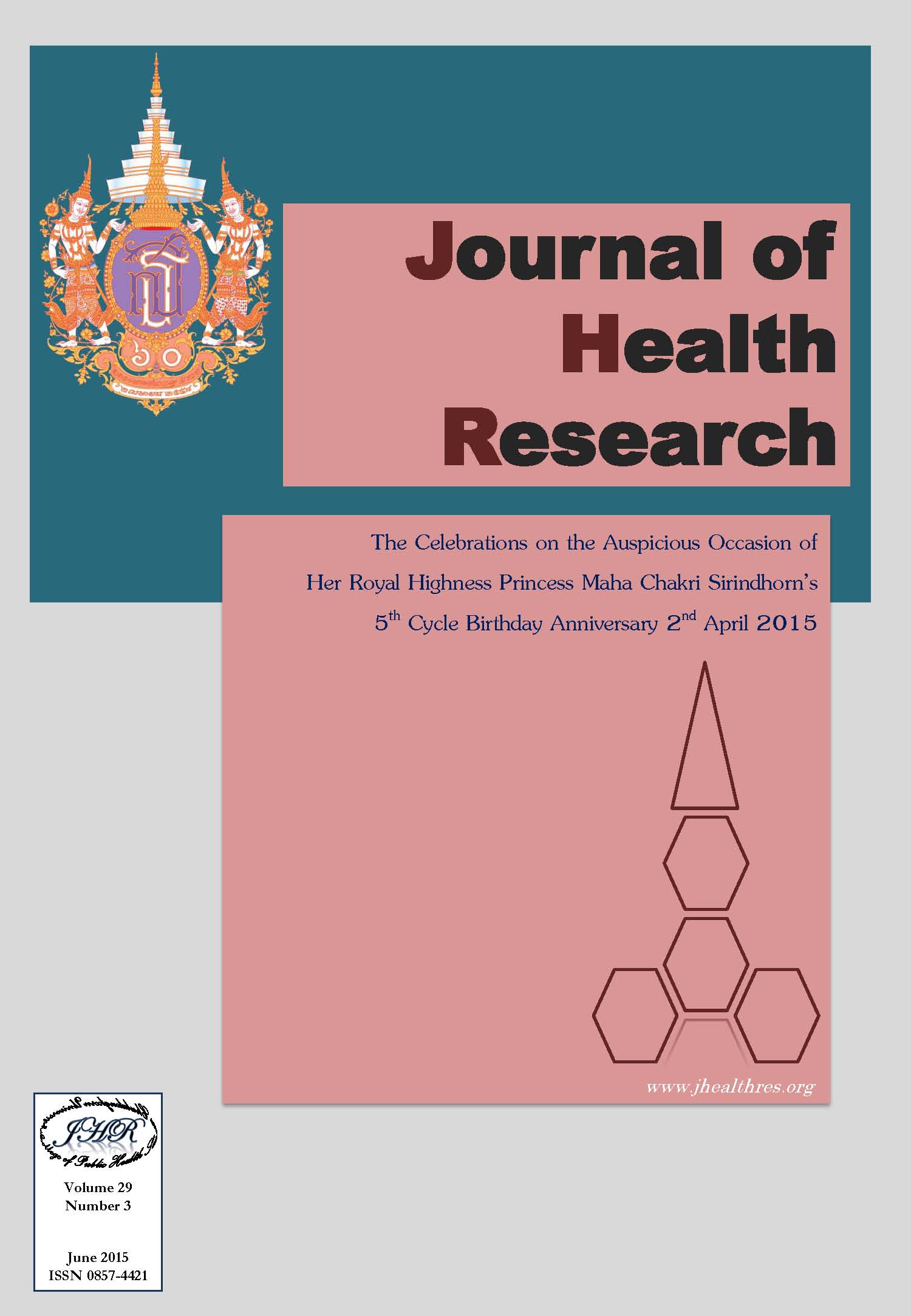Growth and Drug Susceptibility of Artificially Mixed-Clones of Plasmodium Falciparum during In Vitro Cultivation
Keywords:
Plasmodium falciparum, In vitro culture, Pyrimethamine susceptibility, Minimum inhibitory concentration, Half maximal inhibitory concentrationAbstract
To establish an in vitro culture of the human malaria parasite Plasmodium falciparum, an infected blood sample must be collected and transferred to culture medium in which parasites are adapted to propagate in controlled environment. Genetically mixed parasite populations are highly prevalent in a malarial infection in an endemic area and individual clones are diverse in adaptability to the in vitro culture. How proportional variation of parasite clones could affect growth patterns and susceptibility to an anti-malarial drugs during in vitro culture remains largely unknown. To address this question, single- and mixed clone cultures of P. falciparum consisting of a pyrimethamine sensitive clone (T9/94RC17) and/or a pyrimethamine resistant clone (K1CB1) were established at various proportions and followed for 72 hours (short-term) and 90 days (long-term) to monitor for asexual growth patterns and susceptibility to pyrimethamine, respectively. In the single clone cultures, T9/94RC17 produced higher parasitaemia than K1CB1, while in the mixed clone cultures the growth patterns and stage-specific parasitaemia were varied according to the initial proportions of the parasite clones. In the 100:1 and 10:1 T9/94RC17:K1CB1 mixed clone cultures, the growth patterns were similar to that of T9/94RC17, while in the 1:100 T9/94RC17:K1CB1 mixed clone cultures, the growth pattern was identical to that of K1CB1. In contrast, the intermediate growth patterns between the two clones were observed in the mixtures containing 1:1 and 1:10 T9/94RC17:K1CB1. Drug susceptibility tests revealed also the gradual changes in minimum inhibitory concentration (MIC) and half maximal inhibitory concentration (IC50) values of pyrimethamine in the parasite mixtures following 90-day cultivation, while in the single clone cultures these values remained entirely stable, indicating the contribution of the proportion variation of clones in the cultures to anti-malaria drug responses. In summary, our study demonstrated that asexual growth and susceptibility to pyrimethamine were invariable in short-term and long-term P. falciparum cultivations of single parasite clones, but not the mixed clone populations.







